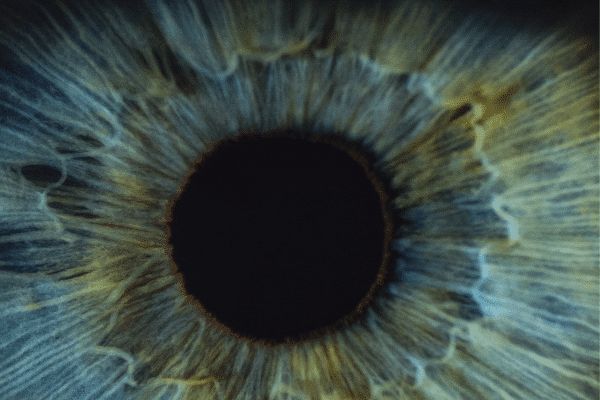Refraction of the eye, to put it simply, is the refraction of light by which a person is able to see an image clearly. It occurs when light entering the eye becomes focused so that it reaches the retina. This phenomenon makes it possible to see observed objects clearly, provided that the patient does not experience refractive disorders, i.e. a defect in vision. What are refractive errors and how are they corrected?
Refraction of the eye - what does it consist of and how is the image formed in the eye?
Refraction of the eye is the process by which light rays reflecting off or passing through an object under observation are refracted.
Initially, the rays reach the cornea - the front, transparent wall of the eye. In the next stage, they reach the lens, and through it they penetrate the retina, where impulses are formed and carried by optic nerves to the brain. During this journey through the eyeball, light rays are refracted, that is, they undergo refraction on the cornea and lens, making clear vision possible.
In addition to refraction, another important process affecting proper vision is the eye's accommodation. The mechanism involves the eye adjusting to the distance separating it from an object in order to see it in proper focus. This can be compared to the operation of binoculars, in which the focus is set with a dial. In the eyeball, its role is fulfilled by the ciliary muscle, which changes the shape of the lens and thus adjusts the angle of refraction, depending on the distance separating the eye from the observed object.
Unfortunately, when any of the above mechanisms does not work properly, that is, the patient is diagnosed with refractive and accommodative disorders, we speak of a visual defect.
Refractive errors - what do they consist of?
When the refractive mechanism of the eye is disrupted, light rays are focused in front of or behind the retina. As a result, the patient sees a blurry, blurry image and is diagnosed with a visual defect known professionally as a refractive error or ocular irregularity.
The most common visual defects associated with refractive and accommodative disorders are:
- Hyperopia - often called farsightedness - a defect in which the retina is located too close to the lens and cornea. Because of this, the light rays do not have the opportunity to "intersect" and there are no conditions for the formation of a clear image.
- Short-sightedness - a defect related to the abnormal structure of the eye, resulting in light rays focusing in front of the retina. As a result, a sharp image is formed in the wrong place - devoid of photosensitive cells. Patients then complain of blurred vision, as a defocused image is already being delivered to the retina.
- Astigmatism - a.k.a., non-compliance, a visual defect resulting from disturbed symmetry of the eye by which light rays refract differently vertically than horizontally. The result is a blurry, smudged and sometimes distorted image.
Another phenomenon is presbyopia - or presbyopia - which is a progressive impairment of the lens' ability to accommodate associated with a decrease in its elasticity with age. As a result, the patient sees close objects less well, has trouble reading (he has to stretch his hand farther and farther with a book) and looking at smaller objects.
At the onset of alarming symptoms, among others, loss of visual acuity, it is important to diagnose as soon as possible in order to accurately determine the visual defect and choose a method of correction.
Refractive disorders - methods of correction
Currently, there are several ways to correct refractive disorders. The most popular are:
- Glasses - one of the basic methods of correcting vision defects. Various types of eyeglass lenses are used for this purpose. They can be divided according to the material they are made of, refractive index- otherwise known as refractive index, power, geometry, design, purpose and construction. For hyperopia, for example, spherical focusing lenses work well, and for myopia, distracting ones. Astigmatism is corrected with cylindrical lenses, while combined defects are corrected with toric lenses.
- Contact lenses - this type of correction is suitable for patients with active lifestyles. Their advantages include. Discretion, the ability to wear regardless of the weather (they do not evaporate), providing a larger field of vision. Contact lenses also correct large and complicated visual defects - even exceeding 6 diopters. Depending on the type of defect, hard or soft lenses are used. Patients also have a choice of lenses for different durations, such as monthly, biweekly and daily disposable. In some cases, orthokeratology lenses are proposed, which are worn overnight , rather than during the day.
- Surgery - for large defects, surgery is sometimes necessary. Currently, surgery offers, among other things. Phakic lens implantation or refractive replacement of the native lens with an intraocular implant. However, many patients manage to replace the above procedures with laser vision correction.
- Laser vision correction - Laser treatments are growing in popularity due to their effectiveness, less invasiveness and safety. Laser correction involves proper shaping of the front surface of the cornea, so patients can see much clearer and do not need to use glasses or contact lenses. Laser treatments, thanks to advanced equipment, allow very precise work, so the risk of complications is greatly minimized. The advantage is also the short time of the whole procedure - about. 5 minutes per eye and the effect felt the same day.
The choice of the method of correcting the refractive defect is always decided by a specialist on the basis of an interview with the patient and the ophthalmological examination carried out. To ensure that you are comfortable with the procedure, it is worth choosing a proven clinic and doctor with many recommendations from previous patients.

